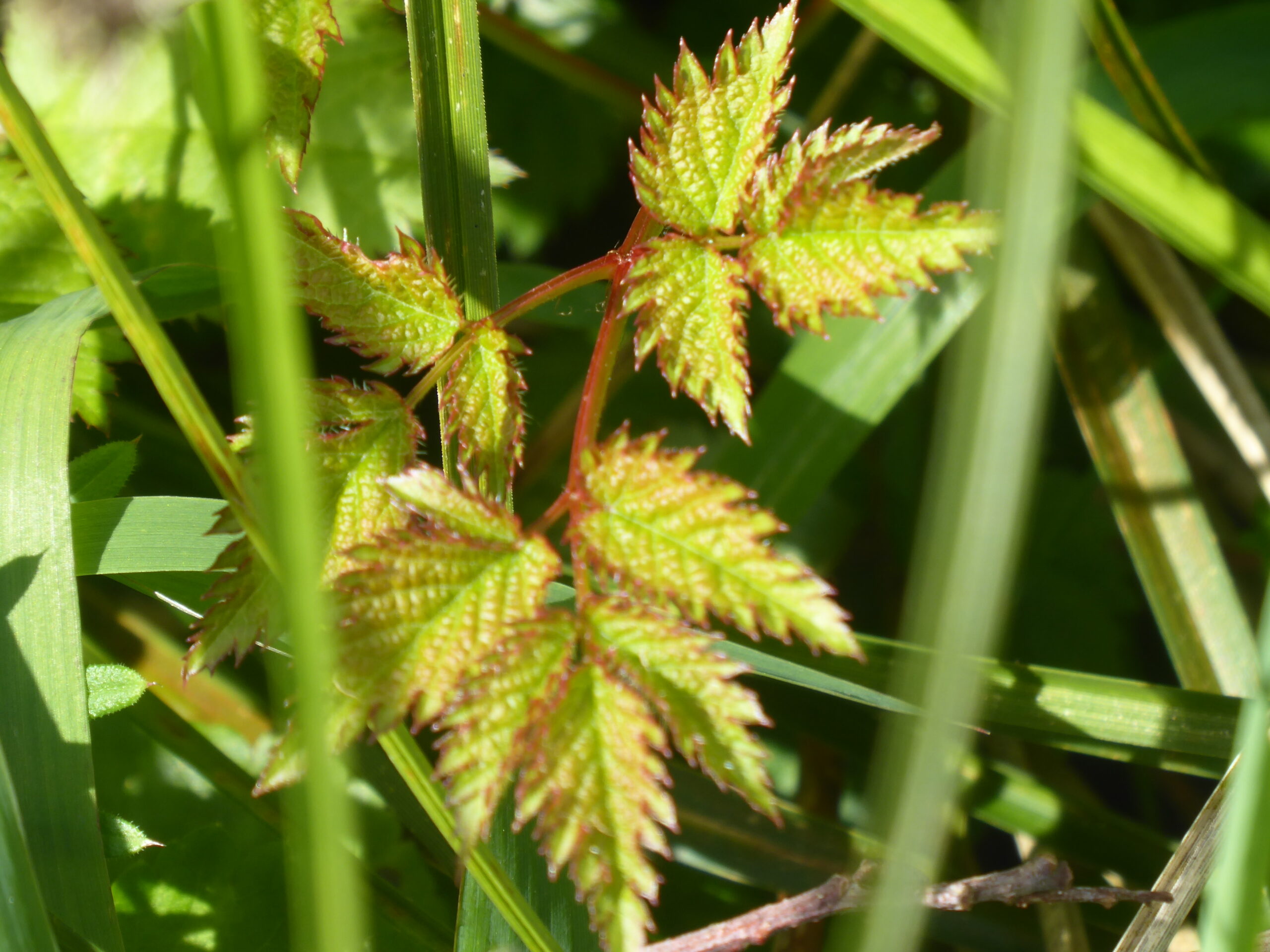Down in Alder Corner is a good place for Astilbes to grow as they like moist dappled shade. They are not supposed to like waterlogged ground, but one or two come up here every year. They have attractive, red-edged leaves and will shortly flower with pink feathery plumes. False Goats Beard is a non-native plant. Ours are not very tall, but in North America, there is a species of Astilbe that can grow up to nearly 2m.
-
Himalayan Honeysuckle (Leycesteria formosa)
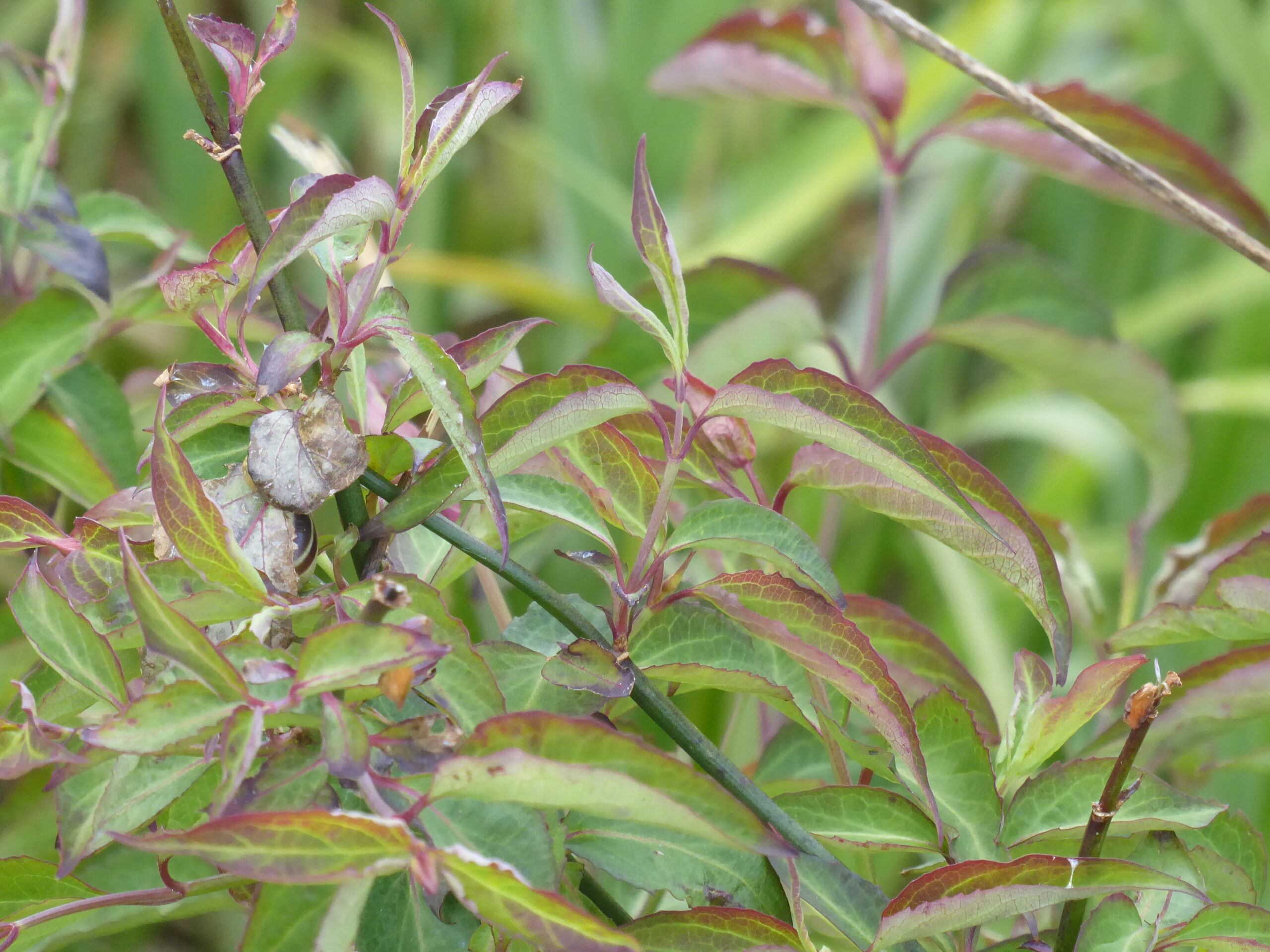
This is growing on the bank (Vole County), most probably another garden escapee. The dryer habitat of the bank down to the watermeadow and the gaps left after the removal of at least eight pampas grasses has resulted in a number of different saplings, as well as wildflowers, ferns and grasses, growing up as nature has taken over the space.
We have a mature Himalayan honeysuckle in the top garden and have been mistakenly calling it the Shrimp tree because of its maroon shrimp-shaped blooms from June to September, which turn into deep purple berries in the autumn. Other names for this shrub are Flowering Nutmeg and Pheasant Berry – I wonder if this is for the gamey smell of the berries when squashed – and the Shrimp Plant is actually a houseplant. This shrub has green leaves delicately shaded with wine red and gold. It is said to be vigorously-growing and could reach 2.5m.
-
Staghorn Sumac (Rhus typhina)
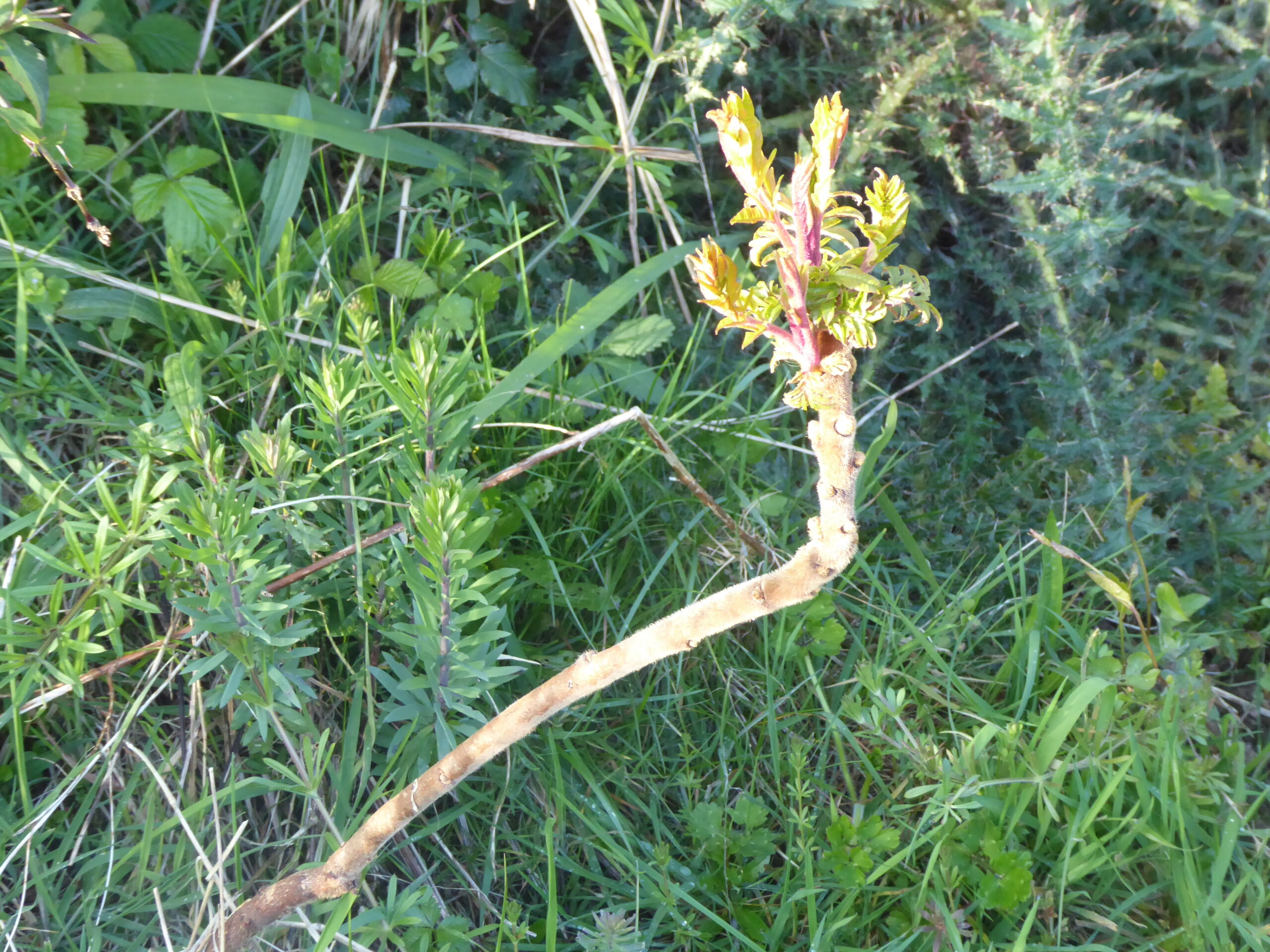
We had one of these in the top garden which wasn’t really flourishing but sending up suckers in the lawn. Now we have one growing on the bank and it seems to be doing quite well. Because the bank slopes up from the watermeadow, it is drier and because we leave it wild, it seems to attract ‘garden escapees’, as well as grass, ferns, and brambles. We knew this as Tree of Heaven, but I now discover that its common name is actually Staghorn Sumac, so-called because of the velvety coating of the branches and crimson fruit clusters. In the autumn the foliage turns to flame with vivid shades of red, orange, and yellow. They are usually found near gardens or cultivated land, escaping by means of suckers which can extend a long way from the tree. Staghorn sumac originates from North America but has been growing in the UK since the seventeenth century.
-
Paper Plant, False Castor Oil Plant, Aralia (Fatsia japonica)
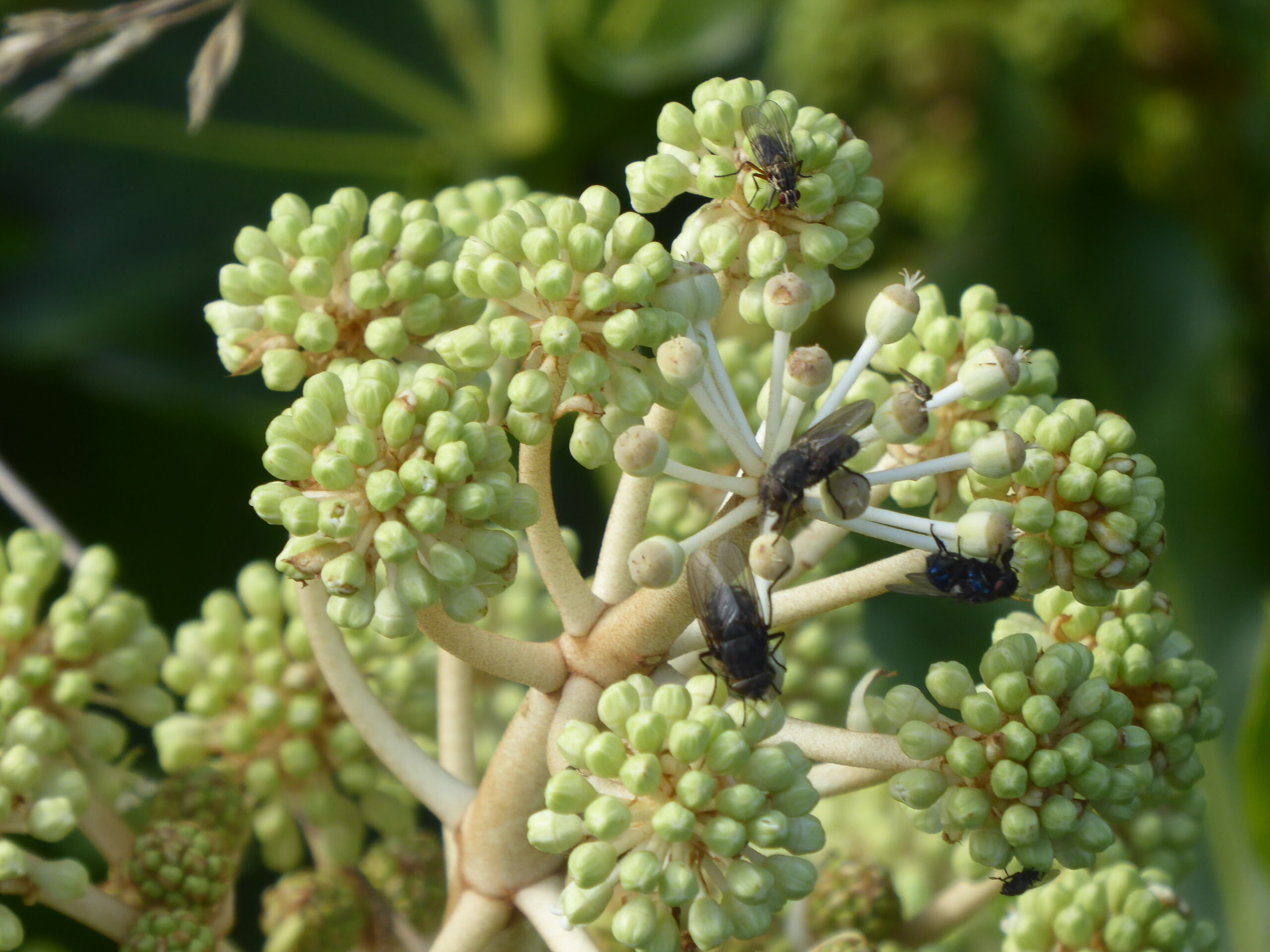
Our two Fatsia japonicas are in flower on the bank of the watermeadow. We have been calling them castor oil plants, but I now know that the real castor oil plant is highly toxic, containing ricin. Castor oil used for medicinal purposes has had the ricin removed. Our plants are, in fact, False Caster Oil plants. Phew!
The false castor oil plant is a non-native species, originating from Southern Japan. It is a hardy evergreen and is related to the Common English Ivy (Hedera helix), which you could probably work out from the similar flowers.
Apparently it can grow up to 4 metres high and has a similar spread. Our two plants are quite large, and though we haven’t seen them in flower before, we have noticed others blooming locally. The flowers appear in the late autumn and, although not a native species, are pollinated by local flies, butterflies, and bees. I saw these black flies and an oscinella frit fly on our flowers. Once pollinated, the flowers will produce dense clusters of fat black berries, which will make a fine feast for blackbirds during the winter.
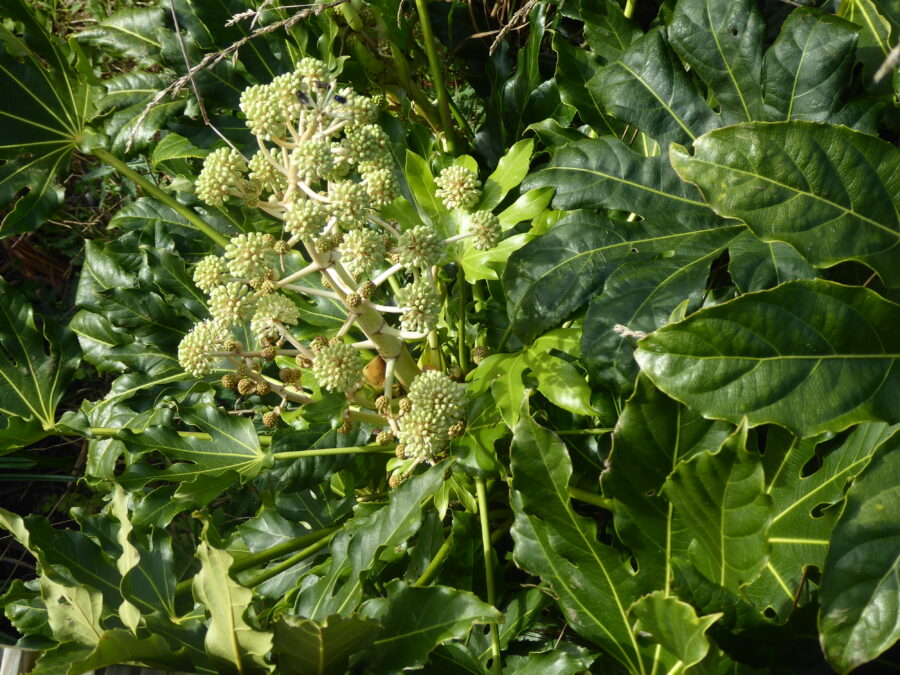
While I was out taking photos this morning, I could hear ducks, a pheasant and various other chirps. I spotted a great tit, but it flew off before I could focus the camera. The kestrel remains elusive, but a fast brown bird flew towards our kitchen window yesterday afternoon and veered off between us and next door. Perhaps more like a sparrowhawk in its behaviour, it sliced past sleekly in a brown blur, so maybe a kestrel. Maybe something else?
-
Californian Poppy (Eschscholzia californica)
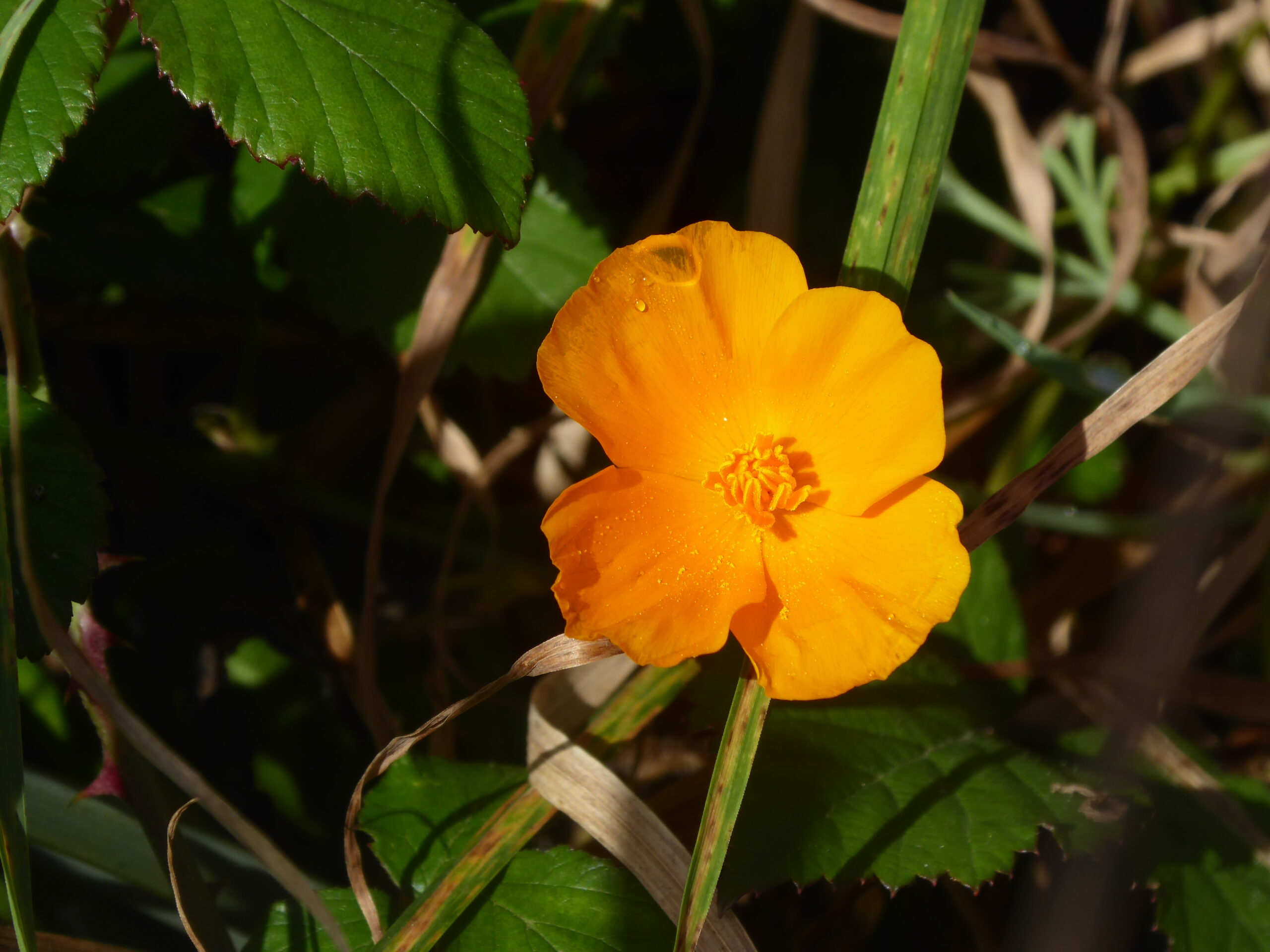
This striking poppy is still blooming on the bank of the watermeadow. I think it has come from some wildflower seeds, but it isn’t a native flower (obvious from its name!). The flowers have four delicate petals of a gorgeous apricot colour, distinct from the Welsh Poppy, which is on the primrose end of the spectrum. The feathery foliage is blue-green, but you can’t see it in the picture, because the brambles got in the way. It is either a perennial or annual, that is, it can survive a mild winter, but will die if the climate is harsh.
-
Caught-out! Great Burnet (Sanguisorba officinalis ‘Pink Tanna’)
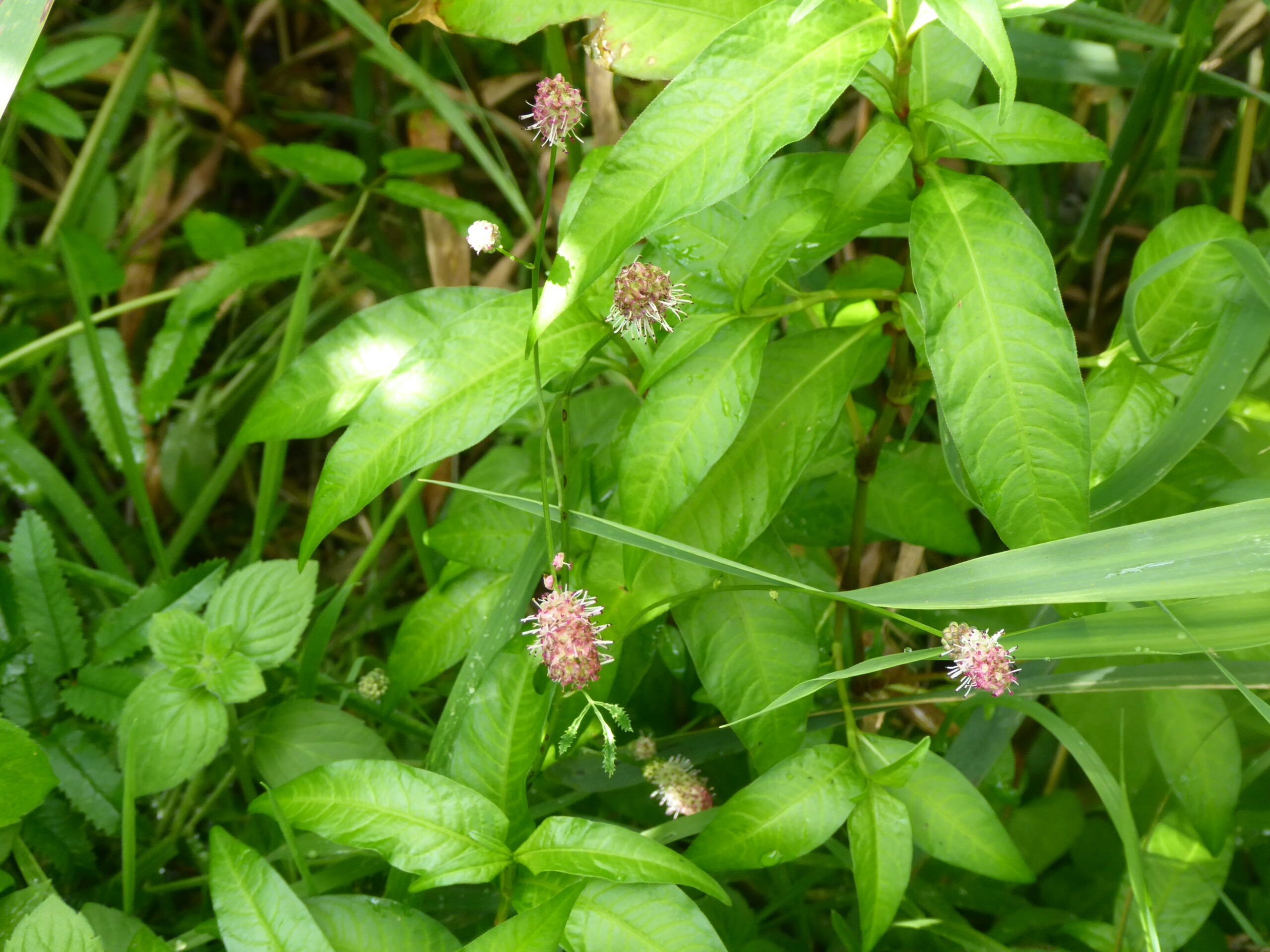
Looking quite at home on the grassy knoll under our weeping willow, this clover-like flower caught my eye. But what was it? I found out it was a burnet and struggled to decide whether it was the Great Burnet, which loves wet places but should have been deep crimson without the black-tipped white stamens, or Salad Burnet, which also didn’t look quite right and prefers dry chalky grassland, so not here then. Further investigation turned up a perfect match in Sanguisorba ‘Pink Tanna’, which was not in my Collins guide. Then I realised that this was one that we had planted. Sanguisorba Tanna is Korean Burnet and is native to Eastern Asia, particularly Korea and China.
Oh.
Well, it obviously loves it under the willow, it loves moist, well-drained soil in a partially shaded location. So we should really move it, but our top garden is very dry, so I don’t think it would do well there. I looked on the RHS website and it said that although it wasn’t native, it was suitable for Wildlife Gardens and Wildflower Meadows in the UK and that it was generally free of pests or diseases. It’s obviously not spreading, as we planted it in 2020 and it is still one little plant. So, I will leave it for the time being.
But I won’t count it on the Tally.
